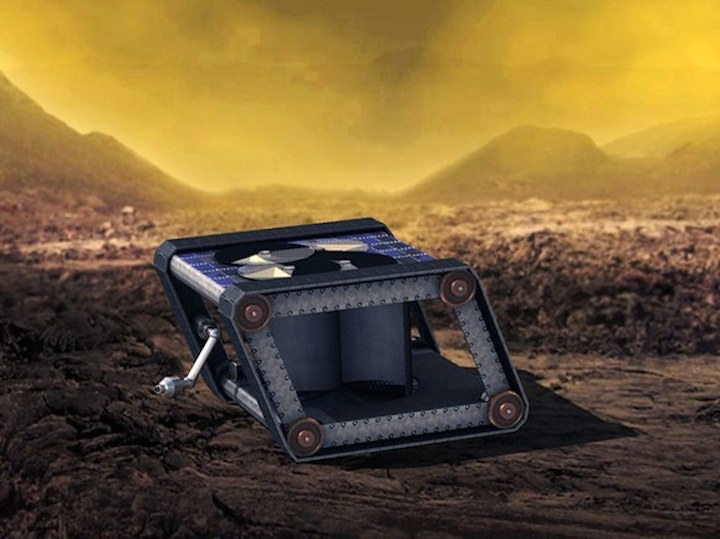26.09.2017

NASA DESIGNED THIS LOW-TECH ROVER TO SURVIVE VENUS
VENUS IS NOT pleasant. Its surface, approximately 850 degrees Fahrenheit, is hot enough for paper to spontaneously combust. Its atmosphere, an oppressive mix of carbon dioxide, nitrogen, and sulfur dioxide, is dense enough to crush a submarine. “I like to think of Venus as turning your oven at home onto self cleaning mode, but also filling it with Easy Off,” says Jason Derleth, head of NASA’s Innovative Advanced Concepts Program (NIAC), a small slice of the agency that funds the exploration of forward-looking technologies. “That’s still not as toxic as the chemical soup it has as its atmosphere. And it’s still not as hot.”
Earth’s neighbor, while certainly inhospitable to humans, is almost just as rough for robots. The last time a bot visited the surface of Venus was in the mid-80s, when the Soviet Union sent its Vega lander to capture data about the planet’s soil. It lasted for less than an hour. “Planetary scientists are very interested in Venus because the data we have is almost nothing,” says Jonathan Sauder, an engineer at NASA’s Jet Propulsion Laboratory. Which is why for the last year, Sauder has been working with fellow JPL engineer Evan Hilgemann and others to build a rover that could last on Venus for days, if not weeks or months.
The key to the rover’s longevity? Keeping it decidedly low-tech. The concept rover, called AREE (Automation Rover For Extreme Environments), is a great example of counterintuitive problem solving. Instead of packing high-tech electronics into its frame, the scientists are building a mechanical rover that works with minimal electronics. The boxy, tank-like bot rolls around on treads, making it impervious to Venus’ rough terrain. Those treads are powered via a wind turbine that captures the planet’s whipping wind gusts and stores that power inside springs before distributing to the various systems on the rover. “If you simplify the concept quite a bit, it’s sort of like a windup toy or a clock,” says Hilgemann.
NASA packs most of its rovers with advanced sensors and electronic tools before it sends them into space. “NASA is all about doing the absolute maximum thing you can do,” Derleth says. “If you're going to send a rover into space you want to make sure that rover can do as much science as possible.” But that conceit is less effective on a planet like Venus, where electronics get fried in a matter of minutes. To counteract the harsh environment, Sauder and Hilgemann kept the functionality as simple as possible.
Unlike an image-based navigation system like the Curiosity rover, AREE's treads can withstand unexpected drops and bumps. And instead of relying on a two-way radio to communicate data, the Venus rover will use a simple optical reflector to transmit its data to orbiting satellites by flashing radar light like morse code. It’s not an information-dense system (AREE is projected to transmit 1,000 bits per day, compared to Curiosity’s 1 million bits) but that limitation actually works in its favor. By sacrificing smarts for sturdiness, NASA is betting a rover like AREE will last longer and travel further than more advanced rovers—which means it can gather a broader, if less detailed, swath of information.
NIAC recently funded a new phase of research on AREE, which will allow the researchers to spend the next three years building a rough prototype of the rover. The program, which focuses on developing ideas that are 10 to 50 years out, isn’t meant to produce mission-ready technologies. But the fact that AREE might never seen the surface of Venus doesn’t bother Sauder and Hilgemann, who say that it’s less about building mission-ready tech and more about changing the way people think about designing for space. “Typically we’d say let’s add more sensors and electronics, but we want to get people thinking about how to use clever mechanisms,” Hilgemann says. “We want to change the way people think about doing missions.”
Quelle: WIRED
NASA DESIGNED THIS LOW-TECH ROVER TO SURVIVE VENUS
